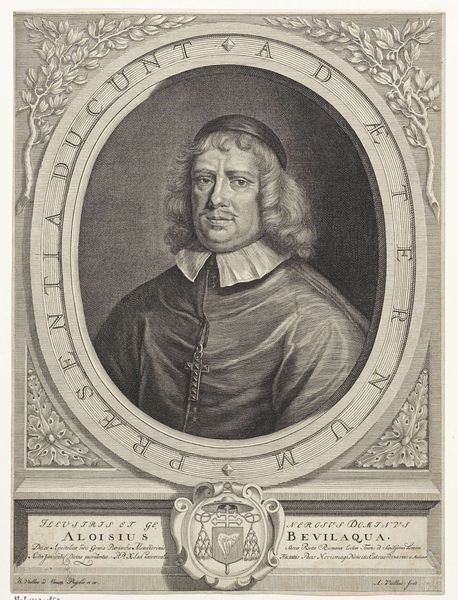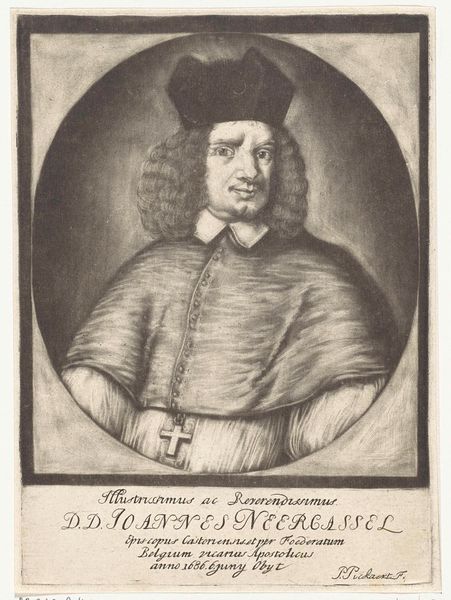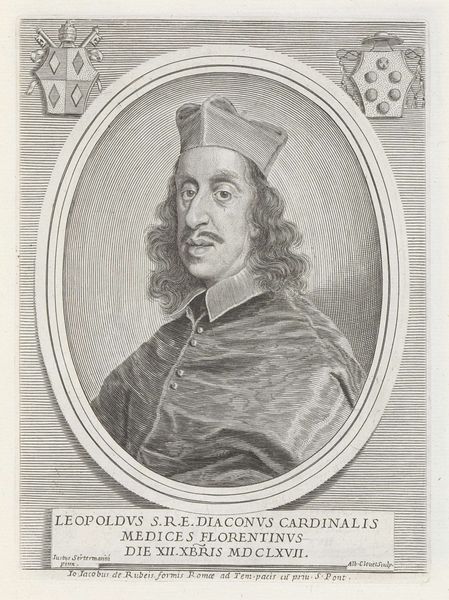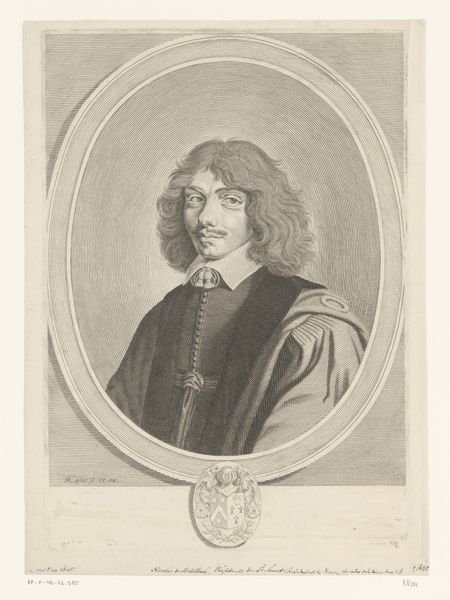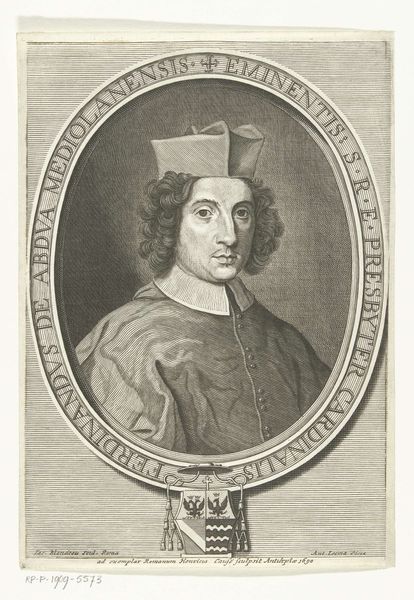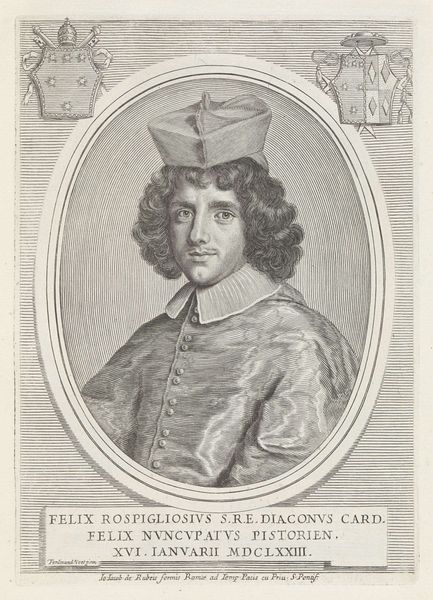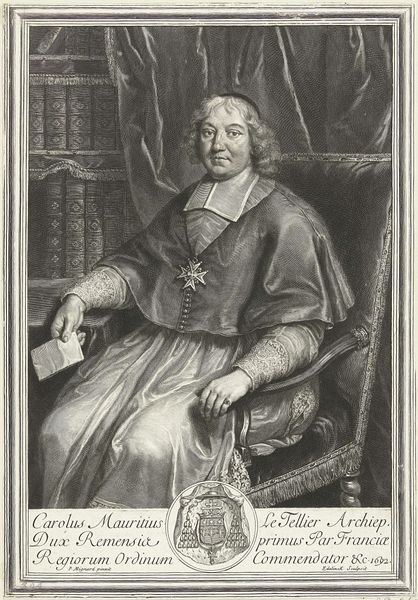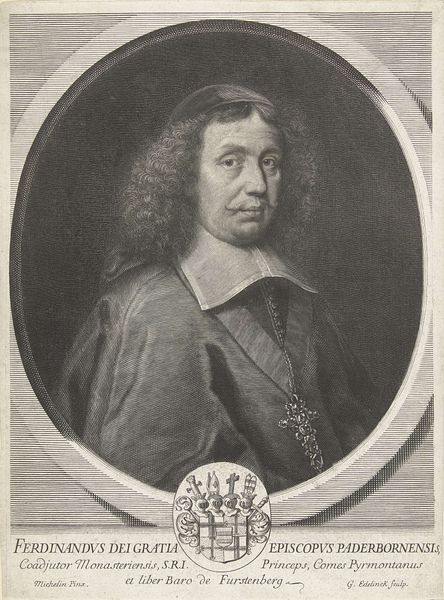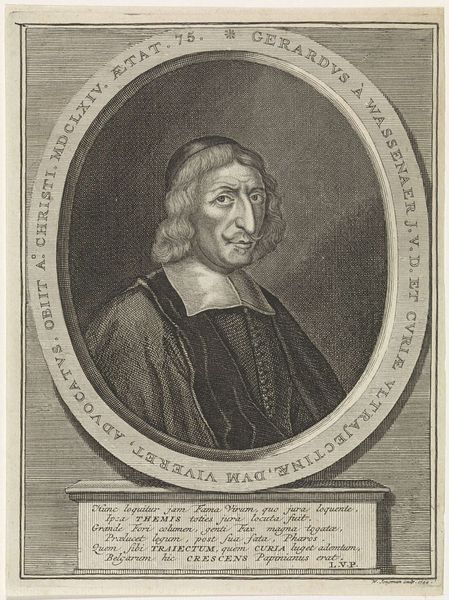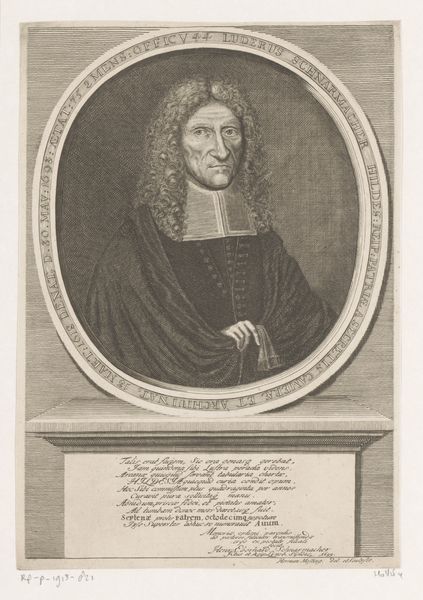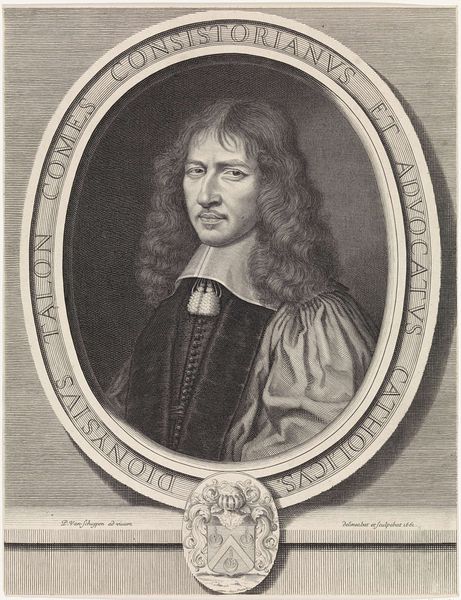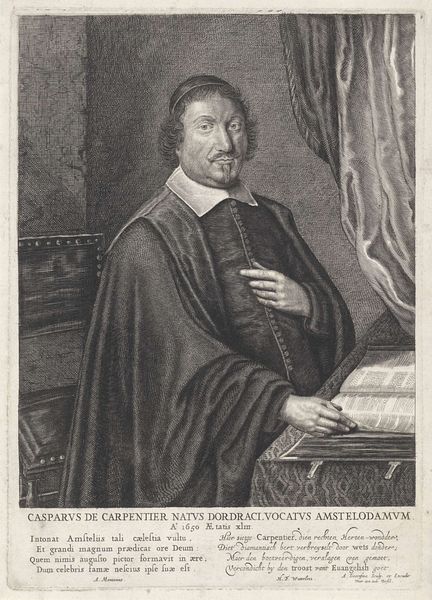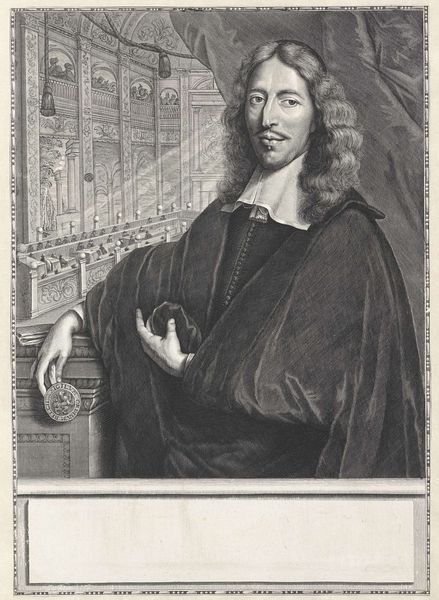
Portret van apostolisch vicaris Johannes van Neercassel 1681 - 1726
0:00
0:00
print, engraving
#
portrait
#
baroque
# print
#
old engraving style
#
engraving
Dimensions: height 243 mm, width 155 mm
Copyright: Rijks Museum: Open Domain
François van Bleyswijck created this print of Johannes van Neercassel. Looking at this portrait, consider the role of imagery in shaping perceptions of religious authority in the Netherlands. Van Neercassel, as Apostolic Vicar, held a significant position within the Catholic community, which had a complex relationship with the dominant Protestant culture. The visual codes in the image are fascinating. His clothing, the interior setting, and the book he holds all contribute to an impression of scholarly authority. How might these details have been intended to project an image of legitimacy for the Catholic Church during a period of religious tension? Consider the ways in which religious figures strategically used portraiture to assert their influence and navigate the intricate politics of their time. Understanding this image requires careful attention to the historical context. What sources might shed light on the social and institutional dynamics that shaped van Neercassel's role and the artist's choices?
Comments
No comments
Be the first to comment and join the conversation on the ultimate creative platform.

